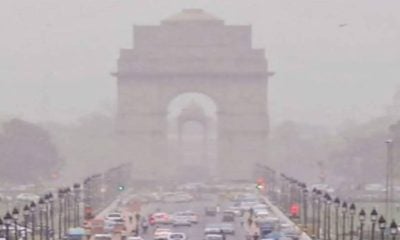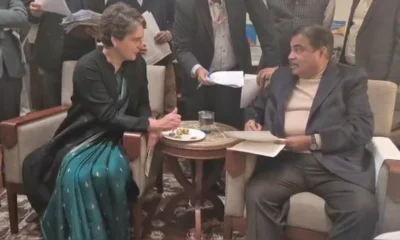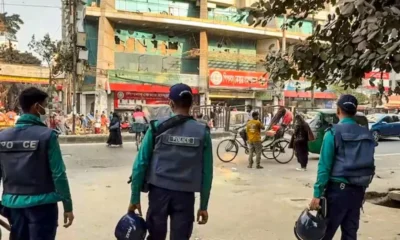India News
Cinema’s Fading Charm

India News
Priyanka Gandhi meets Nitin Gadkari over Kerala road projects, light moments mark discussion
Priyanka Gandhi met Nitin Gadkari in Parliament to discuss road projects in Kerala, with the meeting marked by humour, political remarks and an informal food tasting.
India News
AAP dominates Punjab zila parishad polls, leads in most panchayat samiti zones
AAP has won 201 out of 317 declared zila parishad zones in Punjab so far and is leading in a majority of panchayat samiti seats, with counting still underway.
India News
Vijay signals political push with TVK rally as last film Jana Nayagan promotion aligns with 2026 polls
Vijay combined a major TVK rally with the promotion of his final film Jana Nayagan, signalling a carefully planned transition from cinema to politics ahead of the 2026 Tamil Nadu polls.
-

 India News15 hours ago
India News15 hours agoRs 20,000 fine or forced return as Delhi turns away old vehicles at borders amid severe pollution
-

 India News9 hours ago
India News9 hours agoAAP dominates Punjab zila parishad polls, leads in most panchayat samiti zones
-

 India News14 hours ago
India News14 hours agoParliament passes bill to allow 100% foreign investment in insurance sector
-

 Cricket news13 hours ago
Cricket news13 hours agoIndia vs South Africa T20I abandoned due to fog raises questions over BCCI scheduling
-

 India News13 hours ago
India News13 hours agoVijay signals political push with TVK rally as last film Jana Nayagan promotion aligns with 2026 polls
-

 India News8 hours ago
India News8 hours agoPriyanka Gandhi meets Nitin Gadkari over Kerala road projects, light moments mark discussion
-

 Latest world news8 hours ago
Latest world news8 hours agoIndia closes two more visa centres in Bangladesh amid worsening security concerns

 World Book Fair unaffected by demonetisation
World Book Fair unaffected by demonetisation Kumar also said that children’s books and fiction are the best-selling genres and that NBT has seen the best crowd this year because of the theme of Manushi and also because schools are closed and children are coming with their parents in huge numbers. “We expect a footfall of one lakh on Sunday,” he said.
Kumar also said that children’s books and fiction are the best-selling genres and that NBT has seen the best crowd this year because of the theme of Manushi and also because schools are closed and children are coming with their parents in huge numbers. “We expect a footfall of one lakh on Sunday,” he said. Then there are those amazing coffee table books that book lovers are always attracted to. Some impressive ones are Memorials of Jaypore Exhibition of 1883, Raja Ravi Varma– Painter of Colonial India, The Drawings of Adimoolam and Kalighat Painting.[/vc_column_text][vc_column_text]Rashmi Gupta, a student who is preparing for the civil service exams, seemed interested in reading about issues of international importance. “I am buying books on military strategies, mass mediated terrorism, nuclear diplomacy and insurgency and counter insurgency. I love reading about all these issues,” Gupta said.
Then there are those amazing coffee table books that book lovers are always attracted to. Some impressive ones are Memorials of Jaypore Exhibition of 1883, Raja Ravi Varma– Painter of Colonial India, The Drawings of Adimoolam and Kalighat Painting.[/vc_column_text][vc_column_text]Rashmi Gupta, a student who is preparing for the civil service exams, seemed interested in reading about issues of international importance. “I am buying books on military strategies, mass mediated terrorism, nuclear diplomacy and insurgency and counter insurgency. I love reading about all these issues,” Gupta said.














